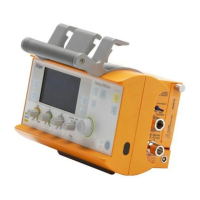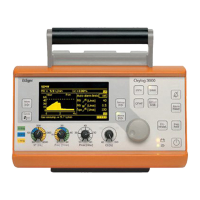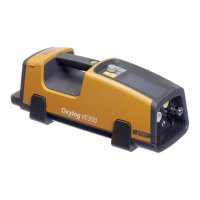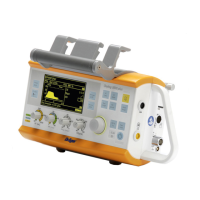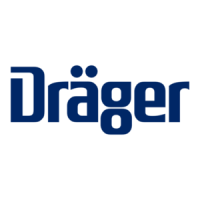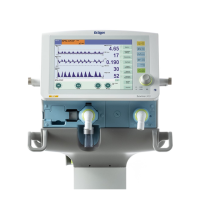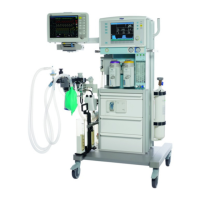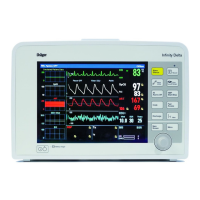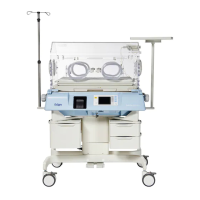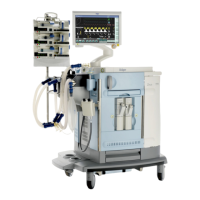Instructions for use Oxylog 3000 plus SW 1.n 59
Getting started
Zero calibration before ventilation
The zero calibration is performed with a clean CO2
sensor that has been removed from the cuvette!
1 Remove the CO
2 sensor (A) from the
cuvette (B).
2 Select and activate Zero calibration. The
screen displays the text Remove the sensor
from cuvette then press rotary knob.
3 Confirm. The zero calibration starts and the line
displays Zero calibration in progress. After a
successful zero calibration, the line briefly
displays Zero calibration OK.
4 Press Alarm Reset to exit.
5 Reconnect the CO
2 sensor to the cuvette.
If zero calibration was not successful:
Oxylog 3000 plus displays the alarm message
Zero calibration failed.
Redo the zero calibration.
If zero calibration is still not possible:
1 Check whether the sensor (A) is soiled and
clean it if necessary. If the sensor is defective,
replace the sensor.
2 Redo the zero calibration.
CO2 filter check before ventilation
1 Remove the CO2 sensor (A) from the
cuvette (B).
2 Connect the CO
2 sensor (A) to the test
filter (B).
3 Select Filter check.
4 Confirm. The filter check starts and the screen
displays Filter check in progress. After a
successful filter check, the line briefly displays
Filter check OK.
5 Press Alarm Reset to exit.
6 Reconnect the CO
2 sensor to the cuvette.
WARNING
Risk of patient injury
The CO
2 measurement can be inaccurate and
lead to a risk of patient injury.
– Before the CO
2 filter check can be per-
formed, perform a CO
2 zero calibration.
– Do not breathe on the CO
2 sensor during
the CO
2 zero calibration and the CO2 filter
check.
– Only perform the CO
2 zero calibration and
the CO
2 filter check at ambient tempera-
tures between 10 and 40 °C (50 and
104 °F).
– Do not perform the CO
2 zero calibration
when exposed to direct sunlight.
17914837171
177
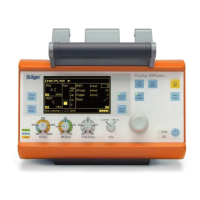
